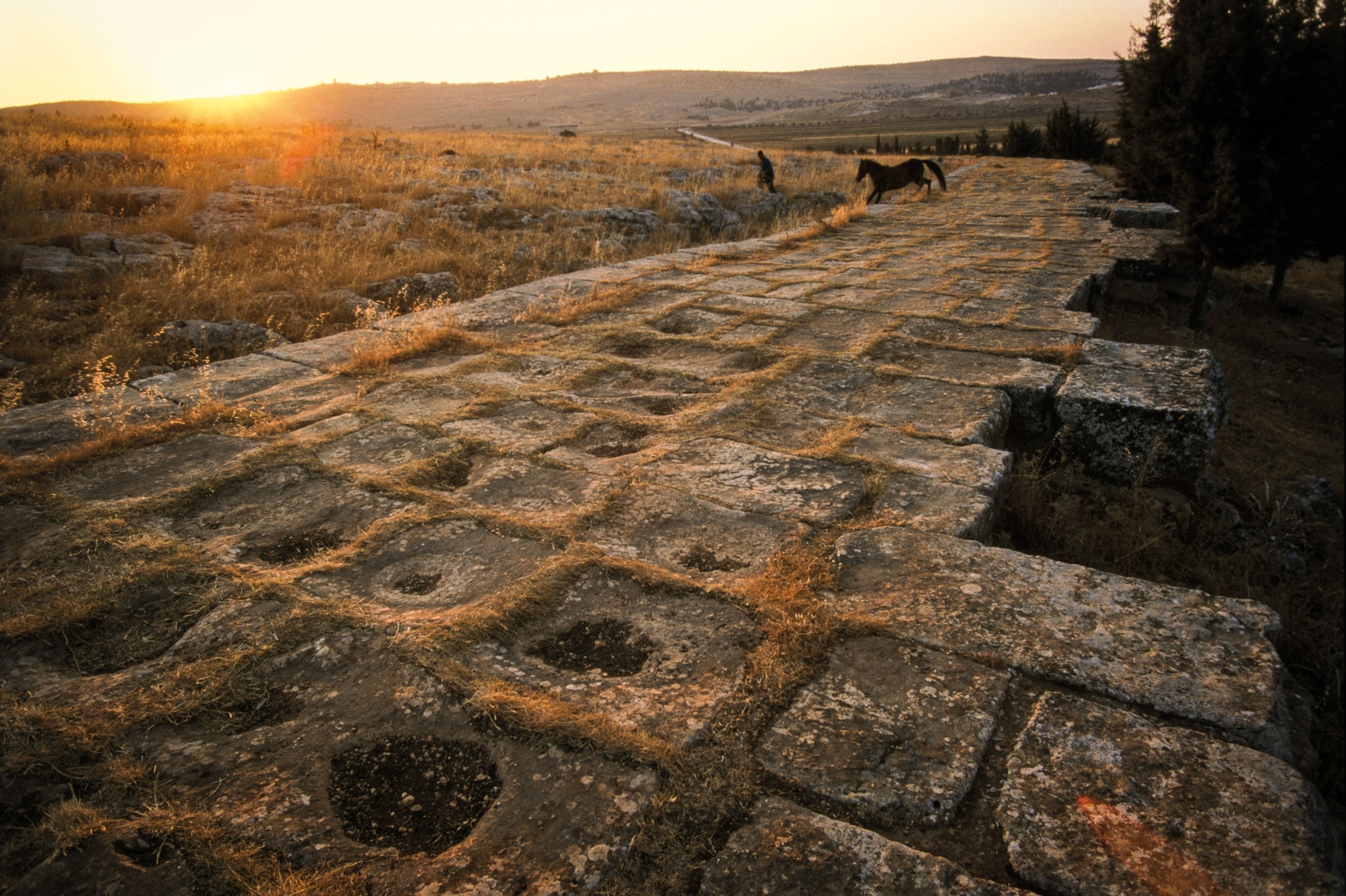The ancient Roman road that once linked the cities of Antakya (ancient Antioch) in Turkey to Aleppo in Syria stands as a remarkable testament to the engineering brilliance of the Roman Empire. Built over two thousand years ago, this road was part of the vast network of Roman infrastructure that connected the far-flung corners of the empire. Its enduring legacy not only showcases the technical skills of Roman engineers but also highlights the cultural and economic significance of such roads in sustaining the empire’s power.
A Strategic Link Between Two Major Cities
The road connecting Antakya and Aleppo was built in the 1st century BCE during a time when the Roman Empire was expanding its influence across the Eastern Mediterranean. Antakya, known as Antioch in Roman times, was a major center of trade, culture, and military activity, while Aleppo (ancient Beroea) was an important hub in Syria. The road linked these two vibrant cities, facilitating the movement of goods, troops, and information across the empire’s eastern provinces.

The route was part of the larger viae publicae, the official network of Roman roads, which extended across Europe, North Africa, and the Middle East. The Antakya-Aleppo road played a key role in connecting the Mediterranean coastline to the interior regions, allowing for trade in essential goods such as olive oil, wine, and textiles. The speed and efficiency of Roman road networks enabled the empire to maintain its dominance over vast distances.
Advanced Roman Engineering Techniques
The construction of this road required significant resources, effort, and technological expertise. Roman engineers were renowned for their use of advanced techniques that ensured the roads were durable, well-drained, and capable of withstanding the wear and tear of heavy traffic. The roads were built using a combination of materials, including gravel, sand, and large stones that were laid in layers to provide a stable foundation.

One of the defining features of Roman road construction was the use of well-fitted stone pavements, which allowed for smooth travel and reduced maintenance. In addition, the roads featured drainage systems that diverted rainwater, preventing erosion and damage to the surface. These engineering techniques were so effective that some sections of the road between Antakya and Aleppo still exist today, a testament to their lasting quality.
The Economic and Cultural Impact
The Antakya-Aleppo road was not just an engineering marvel but also a critical artery for economic and cultural exchange. It allowed for the rapid movement of goods between the Roman provinces, fostering trade and contributing to the economic prosperity of the empire. Merchants used this route to transport luxury items like spices and silk from the East, which were highly prized in Roman markets. The road also facilitated the exchange of ideas and culture, helping spread Roman customs, language, and governance across the empire’s eastern territories.
In addition to its economic benefits, the road served a military purpose, enabling the swift deployment of Roman legions to defend the empire’s borders from potential threats. The Roman military relied heavily on the road system to maintain control over its vast empire, and the Antakya-Aleppo route was no exception.
A Legacy of Roman Infrastructure
The durability and longevity of the Roman road system have left an indelible mark on modern infrastructure. The principles of road construction developed by Roman engineers, such as the use of layered materials for stability and the incorporation of drainage systems, continue to influence modern road-building techniques. The Antakya-Aleppo road, like many other Roman roads, demonstrates the Romans’ forward-thinking approach to infrastructure, which contributed to the empire’s ability to thrive for centuries.
Today, the remnants of this ancient road serve as a powerful reminder of the ingenuity and ambition of the Roman Empire. They provide not only a physical link to the past but also a symbol of the far-reaching impact of Roman engineering and its role in shaping the modern world.
Conclusion
The ancient Roman road connecting Antakya and Aleppo is more than just a historical relic—it is a masterpiece of engineering that played a vital role in the economic, military, and cultural life of the Roman Empire. Its construction highlights the extraordinary skills of Roman engineers, whose work has stood the test of time, and its legacy continues to inspire modern infrastructure projects. This road, and many others like it, symbolize the enduring influence of Roman innovation and the lasting impact of their infrastructure on the world today.
By linking major cities and facilitating trade and communication, the Roman roads helped unify a sprawling empire and ensure its longevity. The Antakya-Aleppo route remains a testament to the Romans’ exceptional engineering prowess and their lasting contribution to the advancement of civilization.



